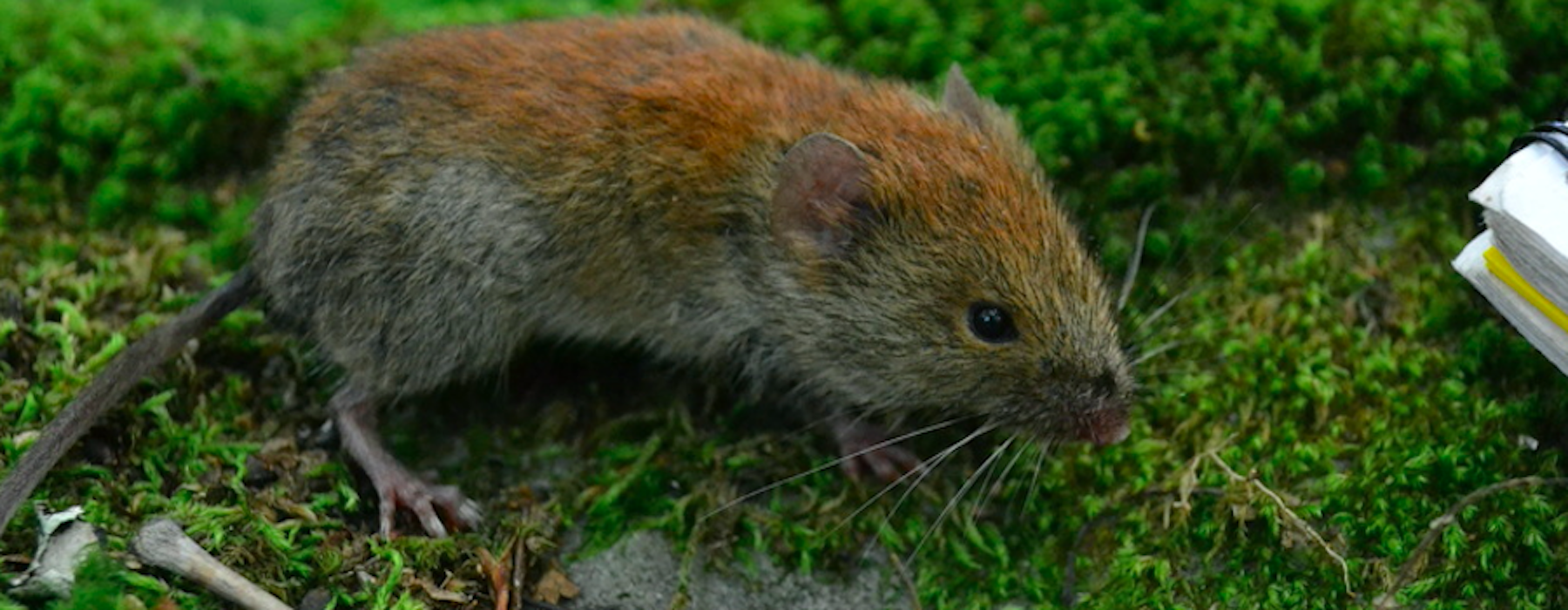Taxonomy
Order Rodentia
Family Cricetidae
Formerly Clethrionomys gapperi
Common Names Southern Red-backed Vole, Gapper’s Red-backed Mouse, Boreal Red-backed Vole
Basic Description:
The southern red-backed vole is characterized by its rusty red/brown color and the even redder swath down its back. The southern red-backed voles in New England are said to have brighter red-orange coats than those in other regions. It has a medium length skinny fur covered tail and medium sized protruding ears. Winter hair is softer and longer and summer hair is coarser and shorter. The under fur of this vole ranges from white to dark gray. The species does not exhibit differences in size or color between sexes, but juvenile animals may be darker than adults. The southern red-backed vole is significantly smaller than the more common eastern meadow vole (Microtus pennsylvanicus) which on average weighs 44 grams.
Total length (with tail): 70-112 mm
Tail length: 25-60 mm
Mass: 6 – 42 g, or 20.57 g on average
Habitat
Southern red-backed voles can be found in forests Canada and the northern US, like Vermont. They are found from the Atlantic to the Pacific coasts. They are most often found in coniferous forests, though they can also live in deciduous forests. Their nests can be found under logs and debris, but also in branches of trees as they are able to climb. They gravitate towards mossy, cool, damp shaded forests.
Vermont Range
There are few mammal species which commonly reside in Vermont 260 acres of alpine tundra, and the southern red backed vole is one of them. Due to the habitat preferences of the southern red backed vole, they are able to survive along the Green Mountain range and other higher elevation coniferous forests. They can be found in and below the state’s alpine meadows, which are found at the summits of Mount Mansfield, Camels Hump and Mount Abraham.
Diet
Type: Omnivore
The southern red backed vole’s diet changes with the seasons. In the spring it eats shoots and buds, in the spring it will add berries to its diet, and in the fall it will seek out nuts. They get less of their diet from fungi, lichen, insects and roots. While they store some food in their burrows in the winter, they forage year round.
Reproduction
The southern red-backed vole starts breeding in the late winter and will continue to breed through the late fall. Females will have 2-3 litters per year, each with a gestation period of 17-19 days. They will have around 2-8 young. It is contested whether or not the male southern red-backed vole remains with the female after mating. The southern red-backed vole reaches sexual maturity at 2-4 months, and has a life expectancy of 20 months.
Conservation Status
- Vermont: S5 (Secure)
- Global: G5 (Secure)
- IUCN Red List: Least Concern
More Information
Vermont Distribution
Banner Image:
Photo 21728769, (c) Nick Tepper, some rights reserved (CC BY-NC) / Cropped from original







